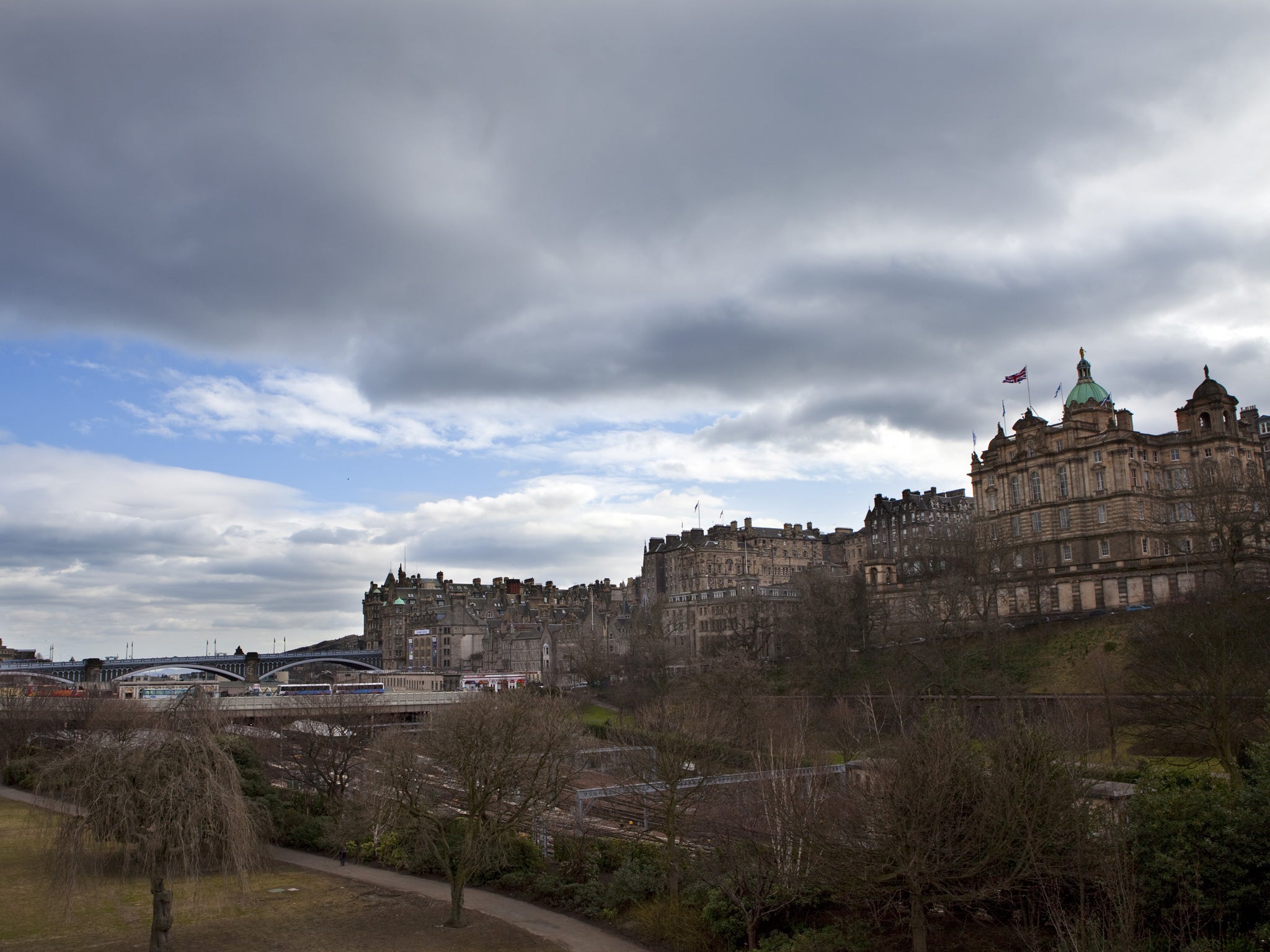Simon Calder: Edinburgh – where the geology and geometry are magic
The man who pays his way

The magic geometry of Scotland's capital is best revealed at the Elephant House. You wander in from a busy, ordinary street just off the Royal Mile, through the model pachyderms that give the "gourmet tea and coffee shop" its name. Order a drink and take it through to the big, bright back room, where the light, and the views, flood in.
The ground drops away, revealing a monumental scene. In the foreground, slate-roofed tenements huddling in the skirts of Greyfriars Kirk – the spiritual home of the Church of Scotland. Every eye, though, zooms in on Edinburgh Castle, rising from an ancient volcanic outcrop. Scotland's stronghold has served as royal residence and military HQ – with its barracks, chapels and fortifications rooted in raw rock.
For anyone disposed to staring out of the window and dreaming, the scene is inspirational – literally so, in the case of J K Rowling, who created the wizardly world of Harry Potter in this very room (writing in longhand, presumably on a jumbo notepad). In the 18 years since the Elephant House opened, other writers such as Ian Rankin (creator of Inspector Rebus) and Alexander McCall Smith (The No. 1 Ladies' Detective Agency) concocted crimes at the café.
You can barely stretch your legs in Edinburgh without discovering another amazing perspective on the city – most of them, free. Wander up to the city's first public park, Calton Hill, for a view along the length of Princes Street and the New Town. For the finest panorama of the Old Town, climb the trail that winds around Salisbury Crags. Funded by the nation, there is something new to look at from on high – in the strange shape of the Scottish Parliament.
You will know of one great Catalan architect whose life was cut tragically short, leaving a strange and wonderful legacy. That was Antoni Gaudí. Another such fellow, Enric Miralles, architect of the Scottish Parliament, died as a result of a brain tumour before his design was completed – leaving Scots and visitors equally mystified as to what it all means. Were Ikea to start selling three-dimensional Venn diagrams, this building is what they would look like.
The long-suffering taxpaper has also paid for a modern platform for admiring the ancient city – in the shape of the roof terrace of the free-to-visit National Museum of Scotland. To round off your tour, pay £11.95 to sample the Victorian version of CCTV. Inside the Camera Obscura at the gates of the Castle, a live image of the city is projected on to a concave dish. Your admission fee also includes, on the lower floors, some fairground attractions in the shape of distorting mirrors.
No wizardry on Pudding Mill Lane
I left Edinburgh on Friday night – and by lunchtime last Saturday I was confronted by more twisted unrealities, this time courtesy of Anish Kapoor. He is the artist who installed Britain's largest public sculpture at the Olympic Park in London. The ArcelorMittal Orbit looks strangely like offcuts from the Forth Bridge transplanted from the north of Edinburgh to the east of London. Inside the viewing gallery, Mr Kapoor has installed modern versions of the Victorian distorting mirrors. Each made me look glum – probably because I was. The people who run the English capital's latest visitor attraction seem intent on making sure that no one actually gets there.
When you pay your £15 online admission fee you get a ticket that instructs you to report to the Pudding Mill Lane Site Office. I deduced this must surely be somewhere on Pudding Mill Lane (though some poor stragglers made the mistake of following signs from Stratford station to the Olympic Park, taking them in completely the wrong direction). It is a short road, whose main feature of note is the complete absence of any sign to the Pudding Mill Lane Site Office. I had arrived in the vicinity 20 minutes before the noon tour – and made it to the right location an hour later. Once you find the hut, your problems are only just beginning. Herds of 20 visitors at a time are ushered in, looking rather like Guantanamo Bay detainees, and made to sit through a video presented by the Mayor of London, Boris Johnson. (The following group evidently clocked what was going on, and leap-frogged the queue for the bus to the sculpture itself.)
Finally, you find yourself 300ft above Pudding Mill Lane – and realise the first truth of high-altitude attractions: you need something decent to look at. The immediate area comprises exactly the wasteland that the Olympic site was supposed to replace, plus a stadium that looks rather too big for its future tenants, West Ham United FC. In the distance you can make out the silhouette of the City – and you yearn to be at the top of the Shard, or the London Eye, where your eye might dance around a proper metropolis.
Café culture redeems it all
The saving grace for the ArcelorMittal Orbit is the nearby View Tube Café – which, like the Elephant House in Edinburgh, provides a surprising and fulfilling view. Mr Kapoor's structure looks much more appealing from the outside than the inside, especially if you have a cup of tea with which to restore good humour.
Subscribe to Independent Premium to bookmark this article
Want to bookmark your favourite articles and stories to read or reference later? Start your Independent Premium subscription today.

Join our commenting forum
Join thought-provoking conversations, follow other Independent readers and see their replies